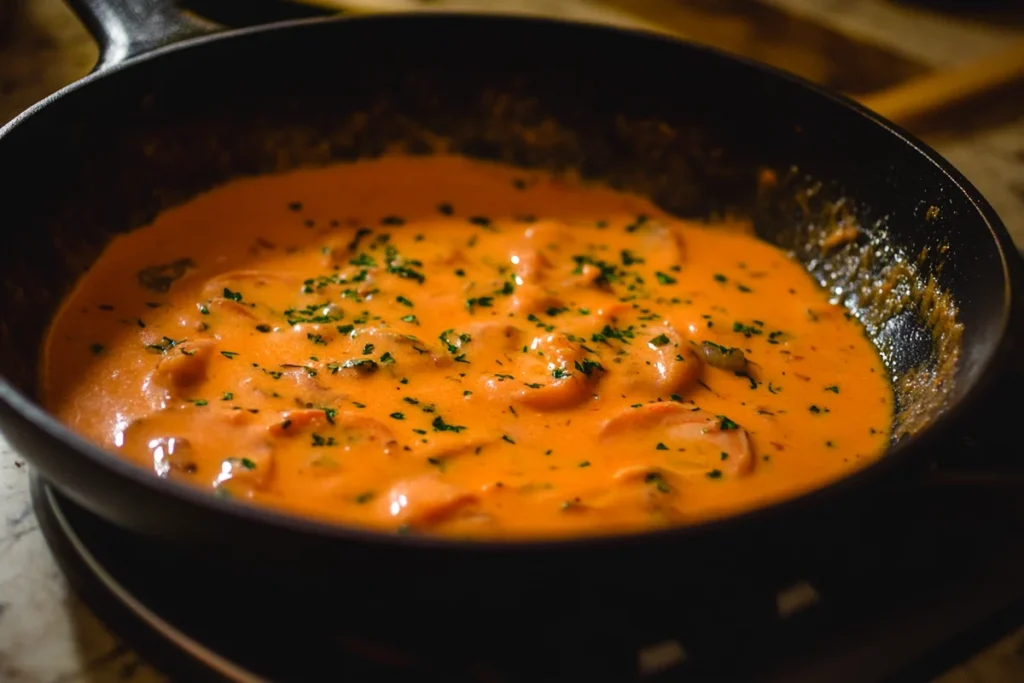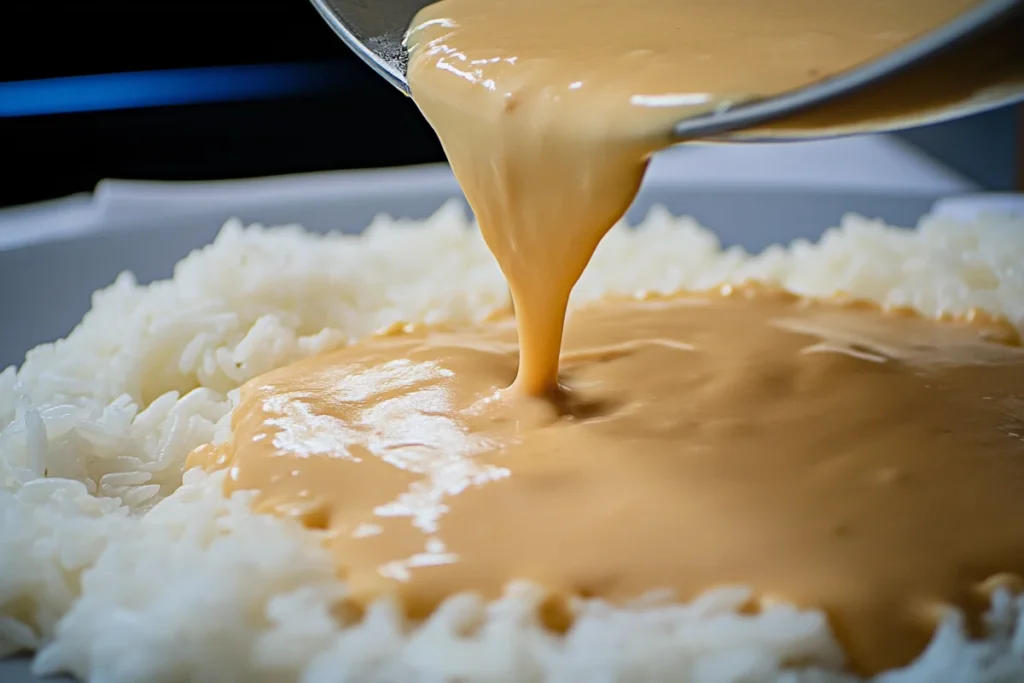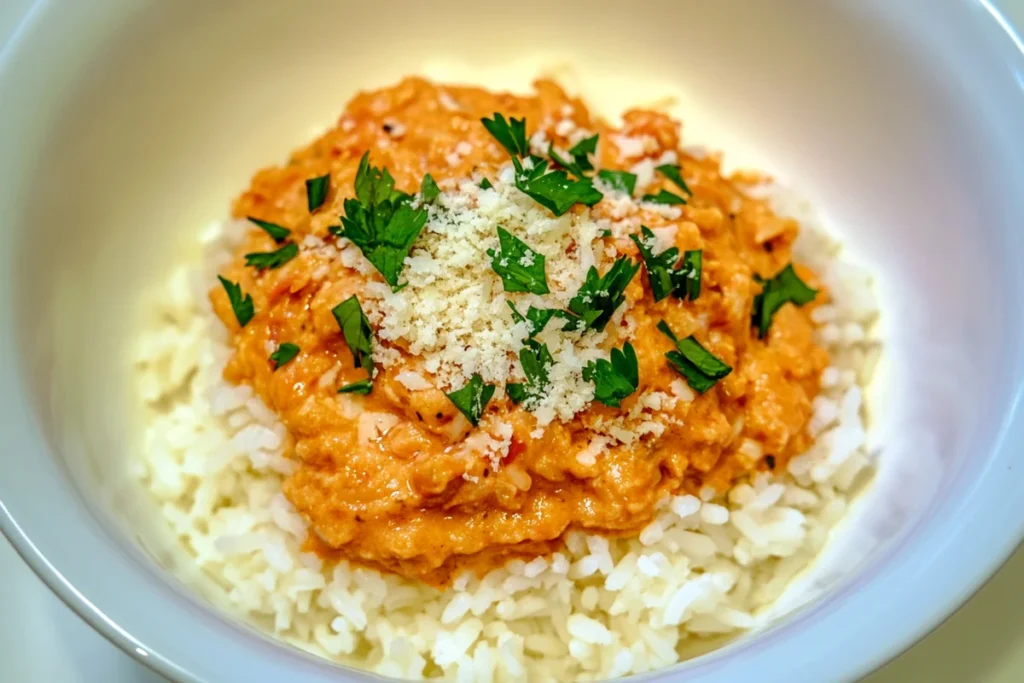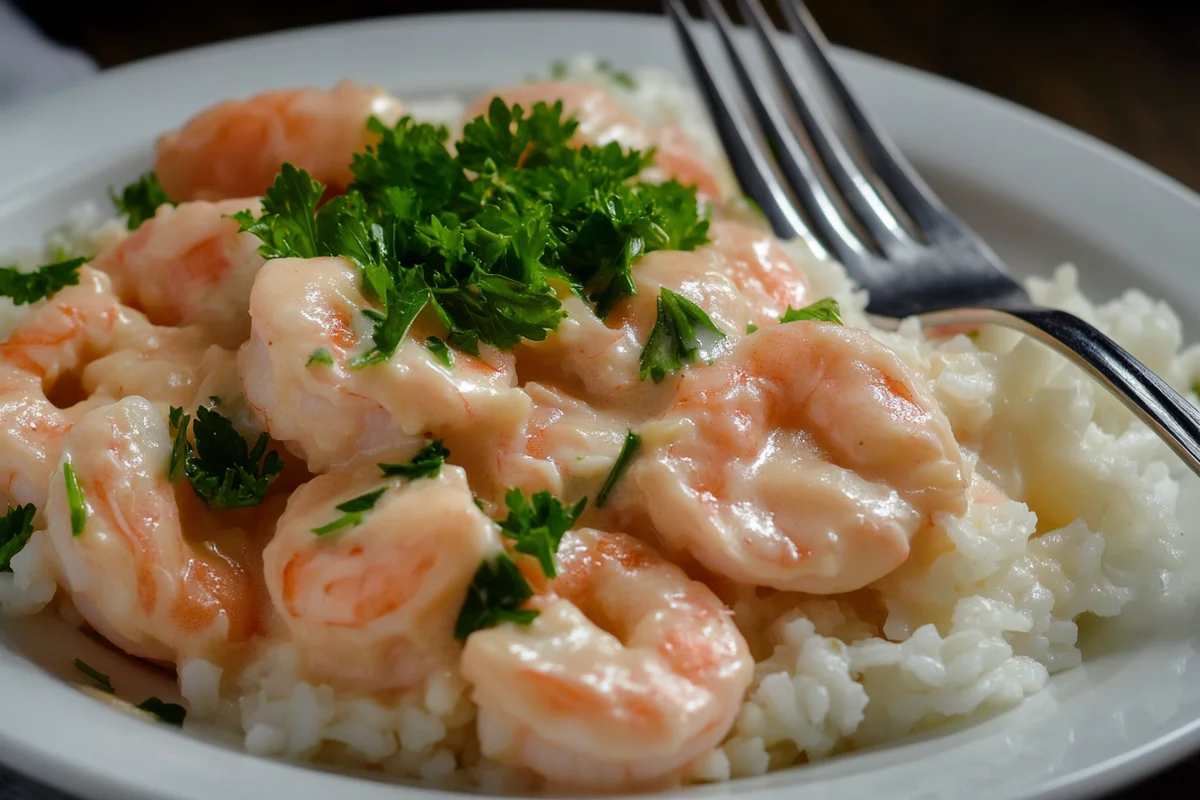Have you heard of Brazilian Manjaro? This delightful dish is making waves, and for good reason! It’s a unique blend of sweet and savory flavors, offering a creamy, comforting texture that’s simply irresistible. While its exact origins are a bit of a mystery, it showcases the vibrant and diverse nature of Brazilian cuisine. Whether you’re a seasoned foodie or just looking to try something new, this Brazilian Manjaro recipe is a fantastic way to explore the exciting world of Brazilian food. If you enjoy exploring different cuisines, you might also like this Shrimp Creole recipe.
Why this Brazilian Manjaro Recipe Is Special
This Brazilian Manjaro recipe isn’t just delicious; it’s also incredibly versatile. The beautiful balance of sweet and savory makes it perfect for any meal, from a casual weeknight dinner to a special occasion feast. The creamy texture adds a touch of indulgence, and trust me, it’s a crowd-pleaser every time.
About Manjaro
Manjaro, in the context of Brazilian cuisine, isn’t a fixed dish with a single, definitive recipe. Think of it more as a culinary concept – a delightful combination of creamy, often cheese-based sauces with savory additions. Unlike the Linux operating system of the same name, this Manjaro is all about flavor!
While specific ingredients can vary widely, the core idea remains the same: a rich, satisfying sauce served over rice, pasta, or vegetables. You might find succulent shrimp featured in coastal areas, while inland versions may showcase hearty meats or vegetables.
This adaptability is part of what makes Manjaro so special, reflecting Brazil’s diverse culinary landscape. From family gatherings to festive celebrations, some form of Manjaro is often a welcome guest at the table. Each region adds its own flair, making it a true reflection of Brazil’s rich culinary heritage. For a simple pasta dish, try our Asparagus Lemon Pasta recipe.
What Makes Brazilian Manjaro Unique?
Brazilian Manjaro distinguishes itself through its emphasis on fresh, local ingredients and vibrant flavors. Unlike heavier cream sauces found in other cuisines, Brazilian versions often incorporate lighter, brighter elements like tomatoes, peppers, and herbs. This creates a unique balance that’s both comforting and refreshing. A common misconception is that Manjaro is always spicy. While some variations might include a touch of heat, many embrace the natural sweetness of ingredients, creating a milder, family-friendly flavor profile. The Brazilian approach is all about celebrating the harmony of ingredients.
Ingredients You’ll Need for Brazilian Manjaro
This Brazilian Manjaro recipe features shrimp, but feel free to adapt it to your liking! Here’s what you’ll need:
- For the Shrimp: 1 pound large shrimp, peeled and deveined (fresh or frozen, thawed)
- For the Manjaro Sauce: 1 tablespoon olive oil, 1 small onion, finely chopped, 2 cloves garlic, minced, 1 (14.5 ounce) can diced tomatoes, undrained, 1 cup heavy cream, 1/2 cup grated Parmesan cheese, 1/4 cup chopped fresh parsley, 1/4 teaspoon salt, 1/4 teaspoon black pepper
- For Serving: Cooked rice, cooked pasta, or steamed vegetables (your choice!)
Choosing fresh, high-quality ingredients will truly elevate this dish. Opt for ripe, juicy tomatoes and freshly grated Parmesan cheese for the best flavor. If using frozen shrimp, ensure they’re fully thawed and patted dry before cooking to prevent a watery sauce. Looking for more ways to use ground beef? Check out these ground beef recipes.
Ingredient Substitutions and Variations
If you’re not a fan of shrimp, or have dietary restrictions, this recipe is wonderfully adaptable! Chicken, firm white fish, or even mushrooms make excellent substitutes. For a vegetarian version, simply omit the shrimp and boost the vegetables. If you’re lactose intolerant, coconut cream can replace heavy cream for a rich, dairy-free alternative. In some regions of Brazil, a touch of dende oil (palm oil) is added for a unique flavor and vibrant color. Feel free to experiment and make it your own! For a comforting and easy meal, try our Instant Pot Corned Beef and Cabbage recipe.
Step-by-Step Instructions for Making Brazilian Manjaro
- Prepare the Shrimp: If using frozen shrimp, make sure they are completely thawed. Peel and devein them. Pat them dry with paper towels. This helps them cook evenly and prevents a watery sauce.
- Sauté the Aromatics: Heat the olive oil in a large skillet over medium heat. Add the chopped onion and cook until softened, about 5 minutes. You’ll know it’s ready when it becomes translucent. Then, add the minced garlic and cook for another minute until fragrant. Don’t let the garlic burn, as it can turn bitter.
- Build the Sauce: Pour in the undrained diced tomatoes. Stir well to combine with the onion and garlic. Bring the mixture to a simmer. Let it simmer gently for about 5 minutes, allowing the flavors to meld. This also helps thicken the sauce slightly.
- Add the Creamy Goodness: Stir in the heavy cream and grated Parmesan cheese. Reduce the heat to low and simmer for another 5-7 minutes, or until the sauce has thickened to your liking. Stir occasionally to prevent sticking. The sauce should coat the back of a spoon.
- Introduce the Shrimp: Add the shrimp to the sauce. Cook for 3-5 minutes, or until the shrimp turns pink and opaque. Be careful not to overcook the shrimp, as they can become tough.
- Final Touches: Stir in the chopped fresh parsley, salt, and pepper. Taste and adjust seasonings as needed. A little extra parsley can brighten the flavor, while a pinch of red pepper flakes adds a touch of heat if desired.
- Serve and Enjoy: Serve the Brazilian Manjaro immediately over your choice of cooked rice, pasta, or steamed vegetables. Garnish with extra parsley if you like. The creamy sauce pairs beautifully with the fluffy rice or the tender pasta.

Visual Guide: Key Steps in Pictures
[Insert image of peeled and deveined shrimp] Alt text: Fresh shrimp, peeled and deveined, ready for cooking. Caption: Preparing the shrimp is the first step.
[Insert image of onions and garlic sautéing in a pan] Alt text: Onions and garlic sautéing in olive oil. Caption: Sautéing the aromatics builds a flavorful base.
[Insert image of the finished Brazilian Manjaro served over rice] Alt text: Brazilian Manjaro served over a bed of fluffy rice. Caption: Enjoy your delicious Brazilian Manjaro!
Tips and Tricks for the Perfect Brazilian Manjaro
Want to take your Brazilian Manjaro to the next level? Here are a few tips and tricks: For those following a low-carb diet, you might be interested in the carb content of low-carb diets.
- Shrimp Size Matters: While large shrimp are recommended for this recipe, you can use smaller ones if that’s what you have on hand. Just adjust the cooking time accordingly to avoid overcooking.
- Don’t Overcrowd the Pan: When sautéing the shrimp, make sure they have enough space in the skillet. Overcrowding can lead to steaming instead of searing, resulting in a less flavorful dish. Cook in batches if needed.
- Fresh Herbs are Key: Fresh parsley adds a bright, vibrant flavor to the Manjaro sauce. If you don’t have fresh parsley, you can substitute with a smaller amount of dried parsley, but fresh is always best.
- Customize Your Heat: While this recipe doesn’t include any spice, feel free to add a pinch of red pepper flakes or a dash of your favorite hot sauce to the sauce for a kick.
- Make it a Complete Meal: Serve your Brazilian Manjaro with a side of steamed vegetables, a fresh salad, or some crusty bread for dipping into the delicious sauce. If you’re curious about the health benefits of shrimp, check out this article on shrimp nutrition.

Troubleshooting Common Issues
- Sauce too thin? Simmer the sauce for a few more minutes uncovered, or whisk in a tablespoon of cornstarch mixed with a tablespoon of cold water to thicken it.
- Sauce too thick? Add a splash of milk or cream to thin it out to your desired consistency.
- Shrimp overcooked? Make sure to not overcook the shrimp. They should be pink and opaque, not rubbery. Add them to the sauce towards the end of the cooking process.
Serving Suggestions and Pairings for Brazilian Manjaro
Brazilian Manjaro is incredibly versatile and can be enjoyed in various settings. It’s a fantastic dish for a casual weeknight dinner with the family, but it can also be elevated for a special occasion. The creamy sauce and succulent shrimp make it a truly satisfying meal. For a delicious and simple dessert to follow your meal, you could try our strawberry smoothie recipe.

Consider serving Brazilian Manjaro with a crisp, refreshing salad to balance the richness of the sauce. A simple green salad with a light vinaigrette works beautifully. For a more substantial meal, pair it with crusty bread for soaking up every last drop of the delicious sauce. A chilled glass of white wine, like a Sauvignon Blanc or Pinot Grigio, complements the flavors of the dish perfectly. If you prefer a non-alcoholic option, a refreshing lemonade or iced tea is a great choice. If you enjoy baking, you could try making our pound cake recipe for dessert.
What to Serve with Brazilian Manjaro
- Fluffy white rice: A classic pairing that soaks up the flavorful sauce.
- Steamed green vegetables: Broccoli, asparagus, or green beans add a healthy touch.
- A simple salad: A light vinaigrette balances the richness of the Manjaro.
- Crusty bread: Perfect for dipping and enjoying every last drop of sauce.
Frequently Asked Questions
What is the Brazilian Manjaro recipe?
The Brazilian Manjaro recipe is a delightful combination of a creamy, savory sauce often featuring shrimp, though variations with chicken, fish, or vegetables are common. It’s characterized by a rich, flavorful sauce made with tomatoes, cream, Parmesan cheese, and herbs, typically served over rice, pasta, or steamed vegetables. The specific ingredients and level of spice can vary based on regional preferences and individual tastes.
What is the recipe for Brazilian Manjaro?
Making Brazilian Manjaro is easier than you might think! It involves sautéing aromatics like onions and garlic, creating a creamy tomato-based sauce, adding your protein of choice (like shrimp), and simmering until cooked through. The final touch is fresh parsley and a sprinkle of Parmesan. Serve it over rice or your preferred base, and enjoy a flavorful, satisfying meal.
What is the recipe for the Brazilian Manjaro?
At its core, Brazilian Manjaro involves a creamy sauce, often featuring tomatoes, cream, and Parmesan, combined with a protein or vegetables. This recipe showcases shrimp, but you can easily adapt it to your liking. Chicken, fish, or even hearty mushrooms make excellent substitutes. The sauce can be served over rice, pasta, or even polenta, offering flexibility for various dietary preferences.
Why is my Brazilian Manjaro too salty?
If your Brazilian Manjaro ends up too salty, don’t worry! There are a few easy fixes. You can try adding a bit more of the unsalted ingredients, such as diced tomatoes or a splash of cream, to dilute the saltiness. Another option is to add a squeeze of lemon juice or a pinch of sugar to balance the flavors. In the future, be mindful of the salt content in ingredients like canned tomatoes and Parmesan cheese, and adjust the added salt accordingly.
Storing and Reheating Your Brazilian Manjaro
Leftover Brazilian Manjaro can be stored in an airtight container in the refrigerator for up to 3 days. Allow the dish to cool completely before storing to prevent condensation, which can lead to spoilage. To reheat, gently warm the Manjaro in a saucepan over medium-low heat, stirring occasionally. Avoid microwaving, as this can make the shrimp tough and the sauce separate. If the sauce thickens too much upon reheating, add a splash of milk or cream to restore its creamy consistency. Enjoy your delicious leftovers!

